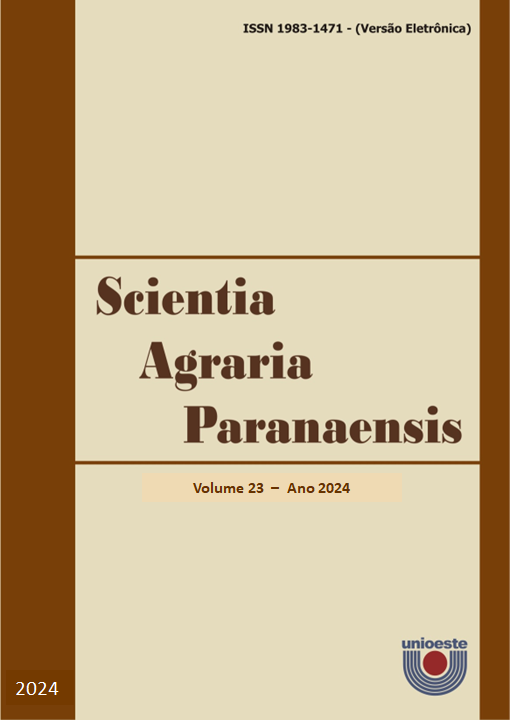Advances in the identification of candidate genes for selection of cattle for ribeye area: a systematic review
DOI:
https://doi.org/10.18188/sap./sap.v23.27732Resumo
In this systematic review, we aimed to clarify which genes or genomic regions influence the development of the longissimus dorsi muscle in cattle. An integrative review was performed based on quantitative and qualitative data published on PubMed, using the search criteria “ribeye area and carcass and taurus”. We verified significant influence of the breed origin, so that, provided environmental effects that benefit the formation of muscle tissues, with the proportional allometric growth, the fat deposition will not be affected; however, there are nutritional limitations for the development of all tissues in commercial livestock production systems. The diversity of genes and SNPs associated with loin eye area (REA) allow the conduction of investigations within breed, associating REA with traits of economic importance that are difficult to measure, such as those related to reproduction. The processes associated with the expression of the genes reported in this review represent a frontier that will be crossed by the omics sciences.
Downloads
Publicado
Como Citar
Edição
Seção
Licença
Aviso de Direito Autoral Creative Commons
Política para Periódicos de Acesso Livre
Autores que publicam nesta revista concordam com os seguintes termos:
1. Autores mantém os direitos autorais e concedem à revista o direito de primeira publicação, com o trabalho simultaneamente licenciado sob a Licença Creative Commons Attribution que permite o compartilhamento do trabalho com reconhecimento da autoria e publicação inicial nesta revista.2. Autores têm autorização para assumir contratos adicionais separadamente, para distribuição não-exclusiva da versão do trabalho publicada nesta revista (ex.: publicar em repositório institucional ou como capítulo de livro), com reconhecimento de autoria e publicação inicial nesta revista.
3. Autores têm permissão e são estimulados a publicar e distribuir seu trabalho online (ex.: em repositórios institucionais ou na sua página pessoal) a qualquer ponto antes ou durante o processo editorial, já que isso pode gerar alterações produtivas, bem como aumentar o impacto e a citação do trabalho publicado (Veja O Efeito do Acesso Livre).
Licença Creative Commons
Esta obra está licenciada com uma Licença Creative Commons Atribuição-NãoComercial-CompartilhaIgual 4.0 Internacional, o que permite compartilhar, copiar, distribuir, exibir, reproduzir, a totalidade ou partes desde que não tenha objetivo comercial e sejam citados os autores e a fonte.


